"All Along The Wires" (沿着电线)
// BLURB //
We assume that uncaged birds are free. What if we are wrong about that? Cities, cats, windmills, airplanes—they all seem to hold down the bird that wishes to fly unfettered. If birds are limited by their environment, what about people? Søren Kierkegaard wrote that “either/or” isn’t really a choice. For Kierkegaard, the point is more about preserving possibilities. Share bikes allow us to have a free-range attitude, giving us the best of both worlds. We can ride to our heart’s desire and just dump the bike when we feel like it. Applying these ideas to the artworld reveals a unique situation. Contemporary art is predicated on two ideas: that possibilities abound, and that artists and viewers have free will. But most artist-viewer relationships are mediated by institutions like galleries and museums which reward artists and viewers for participating correctly. Everyone involved has been totalized by the institution, conditioned to processes artworks into a set of either/or dichotomies. The easiest key to success here? Self-censorship. Careful, methodical nothingness wins treasures. But going against the grain wins hearts. Go ahead and break the spell, give us a clap.
We assume that uncaged birds are free. What if we are wrong about that? Cities, cats, windmills, airplanes—they all seem to hold down the bird that wishes to fly unfettered. If birds are limited by their environment, what about people? Søren Kierkegaard wrote that “either/or” isn’t really a choice. For Kierkegaard, the point is more about preserving possibilities. Share bikes allow us to have a free-range attitude, giving us the best of both worlds. We can ride to our heart’s desire and just dump the bike when we feel like it. Applying these ideas to the artworld reveals a unique situation. Contemporary art is predicated on two ideas: that possibilities abound, and that artists and viewers have free will. But most artist-viewer relationships are mediated by institutions like galleries and museums which reward artists and viewers for participating correctly. Everyone involved has been totalized by the institution, conditioned to processes artworks into a set of either/or dichotomies. The easiest key to success here? Self-censorship. Careful, methodical nothingness wins treasures. But going against the grain wins hearts. Go ahead and break the spell, give us a clap.
STATUS
SOLD. Public collection, Shenzhen.
SOLD. Public collection, Shenzhen.
EDITION, MEDIA, SIZE & WEIGHT
Unique Edition, Shanghai 2020
RGB LED display, acrylic painting on Plexiglass, paper collage, sound sensor, 8-bit microcontroller, teakwood frame
102(W)×102(H)×5.5(D) cm // 33.1 kg
TECH SPECS
• 1×SLC SD Card
• 1×MWLPV20-5 (INPUT 100~240VAC@0.55A / OUTPUT 5V@3A)
• 3×MWLPV-60-5 (INPUT 100~240VAC@1.2A / OUTPUT 5V@8A)
• 1×MWLPV20-12 (INPUT 90~264VAC@0.55A / OUTPUT12V@1.67A)
• (6+1 spare)×RGB P5-2525(RGB20)-64X32-8S-M1 / D190733
• Arduino Genuino • DFROBOT Analog Sound Sensor V2
CRATE SIZE & WEIGHT
115(W)×115(H)×18(D) cm // 62.5 kg
EXPOSURE
“Perimeters, Edges, and Walls” at island6 Shanghai Main Space
CREDITS
Wang Tie Zhong 王铁中 (painting) • Yeung Sin Ching 杨倩菁 (production supervisor) • Thomas Charvériat (art direction & animation) • Carlin Reinig (blurb)
Unique Edition, Shanghai 2020
RGB LED display, acrylic painting on Plexiglass, paper collage, sound sensor, 8-bit microcontroller, teakwood frame
102(W)×102(H)×5.5(D) cm // 33.1 kg
TECH SPECS
• 1×SLC SD Card
• 1×MWLPV20-5 (INPUT 100~240VAC@0.55A / OUTPUT 5V@3A)
• 3×MWLPV-60-5 (INPUT 100~240VAC@1.2A / OUTPUT 5V@8A)
• 1×MWLPV20-12 (INPUT 90~264VAC@0.55A / OUTPUT12V@1.67A)
• (6+1 spare)×RGB P5-2525(RGB20)-64X32-8S-M1 / D190733
• Arduino Genuino • DFROBOT Analog Sound Sensor V2
CRATE SIZE & WEIGHT
115(W)×115(H)×18(D) cm // 62.5 kg
EXPOSURE
“Perimeters, Edges, and Walls” at island6 Shanghai Main Space
CREDITS
Wang Tie Zhong 王铁中 (painting) • Yeung Sin Ching 杨倩菁 (production supervisor) • Thomas Charvériat (art direction & animation) • Carlin Reinig (blurb)
CLOSE-UPS
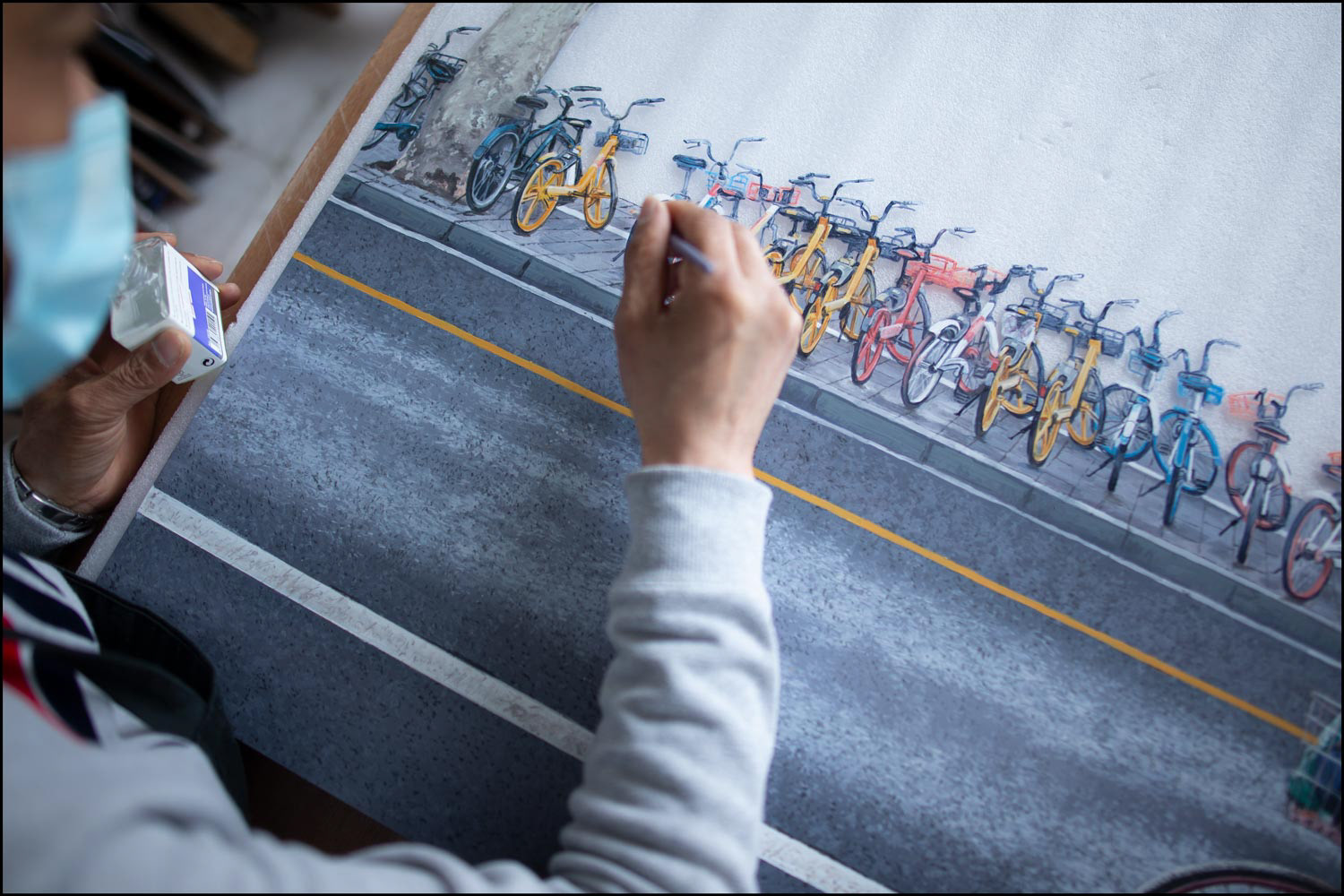
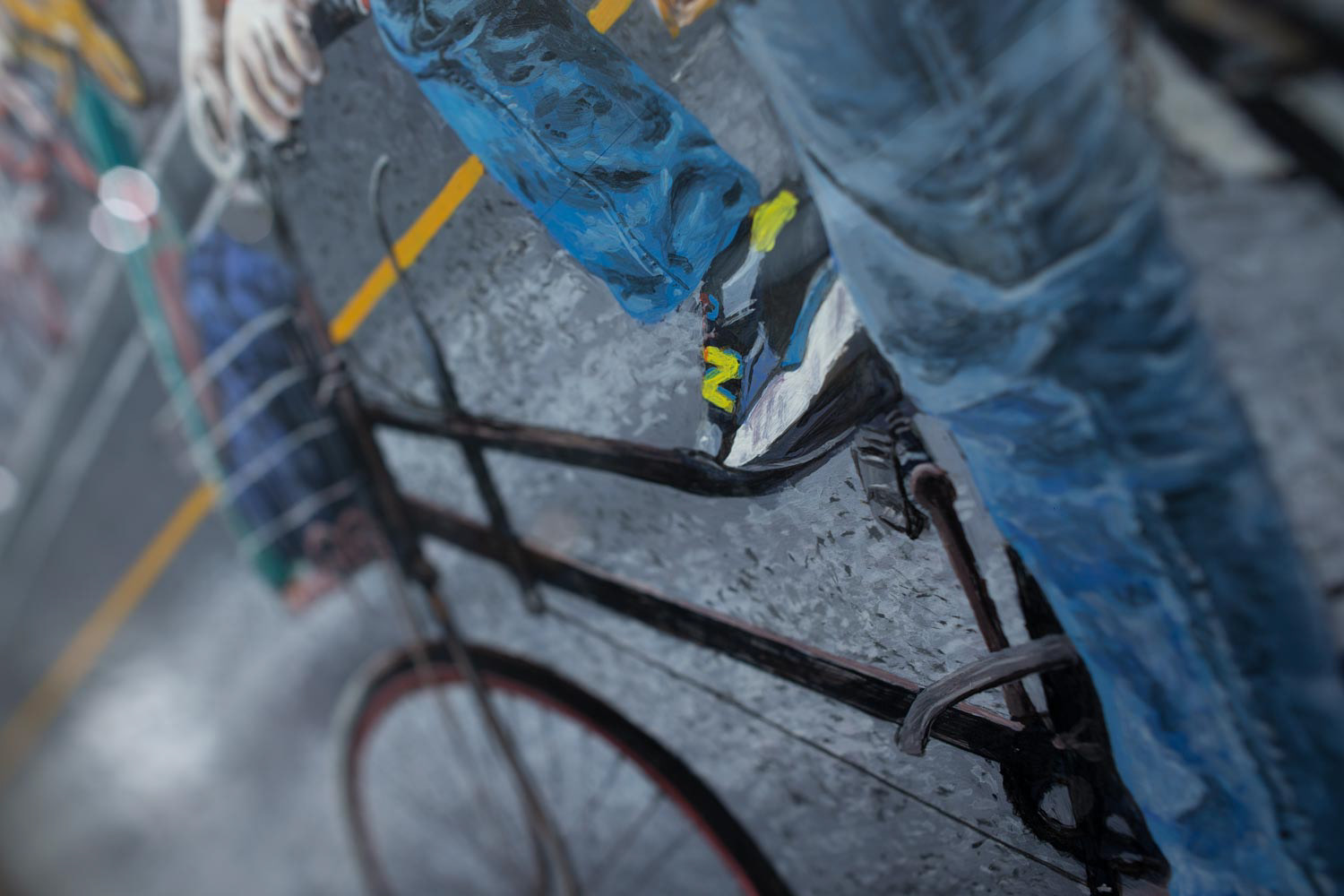
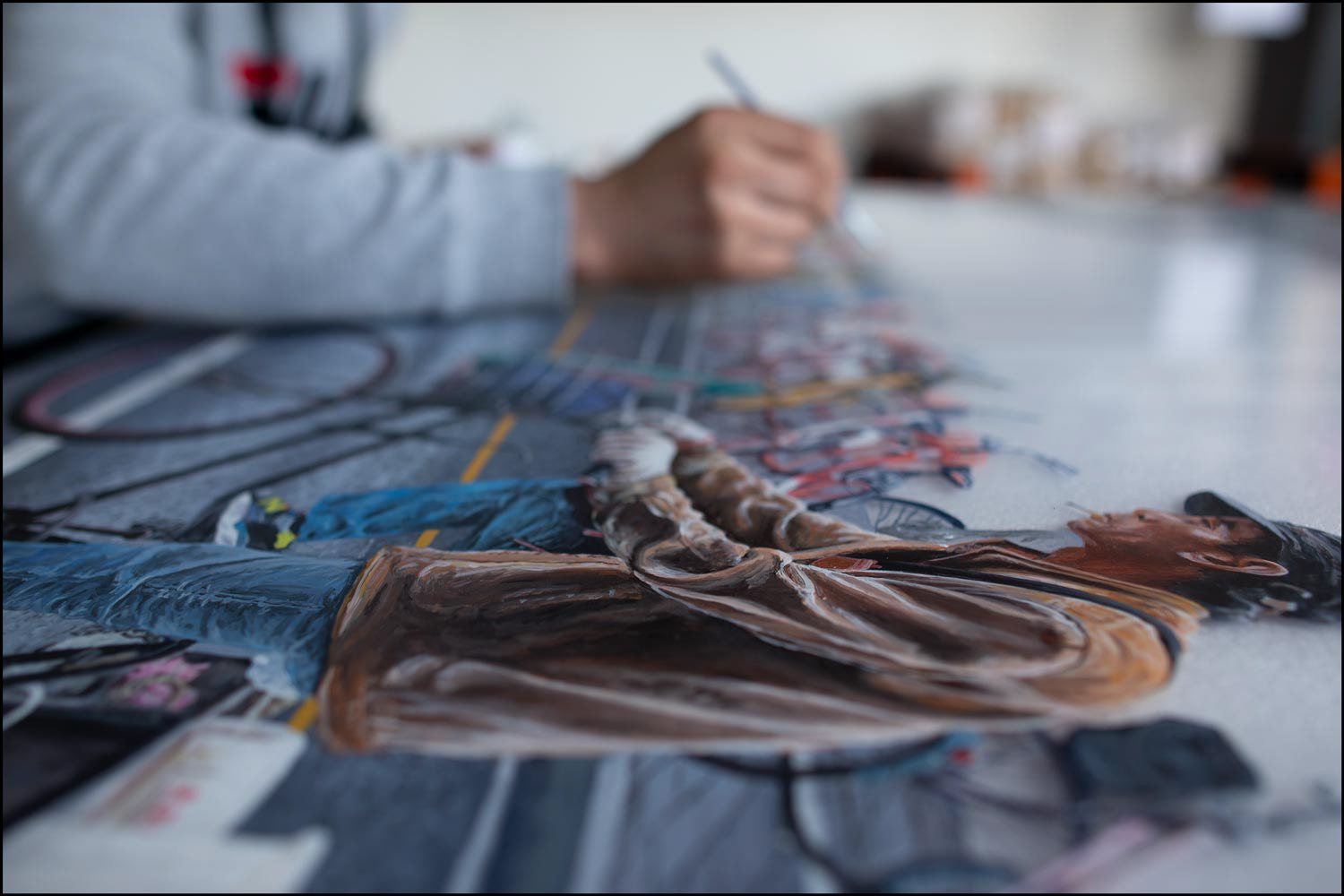
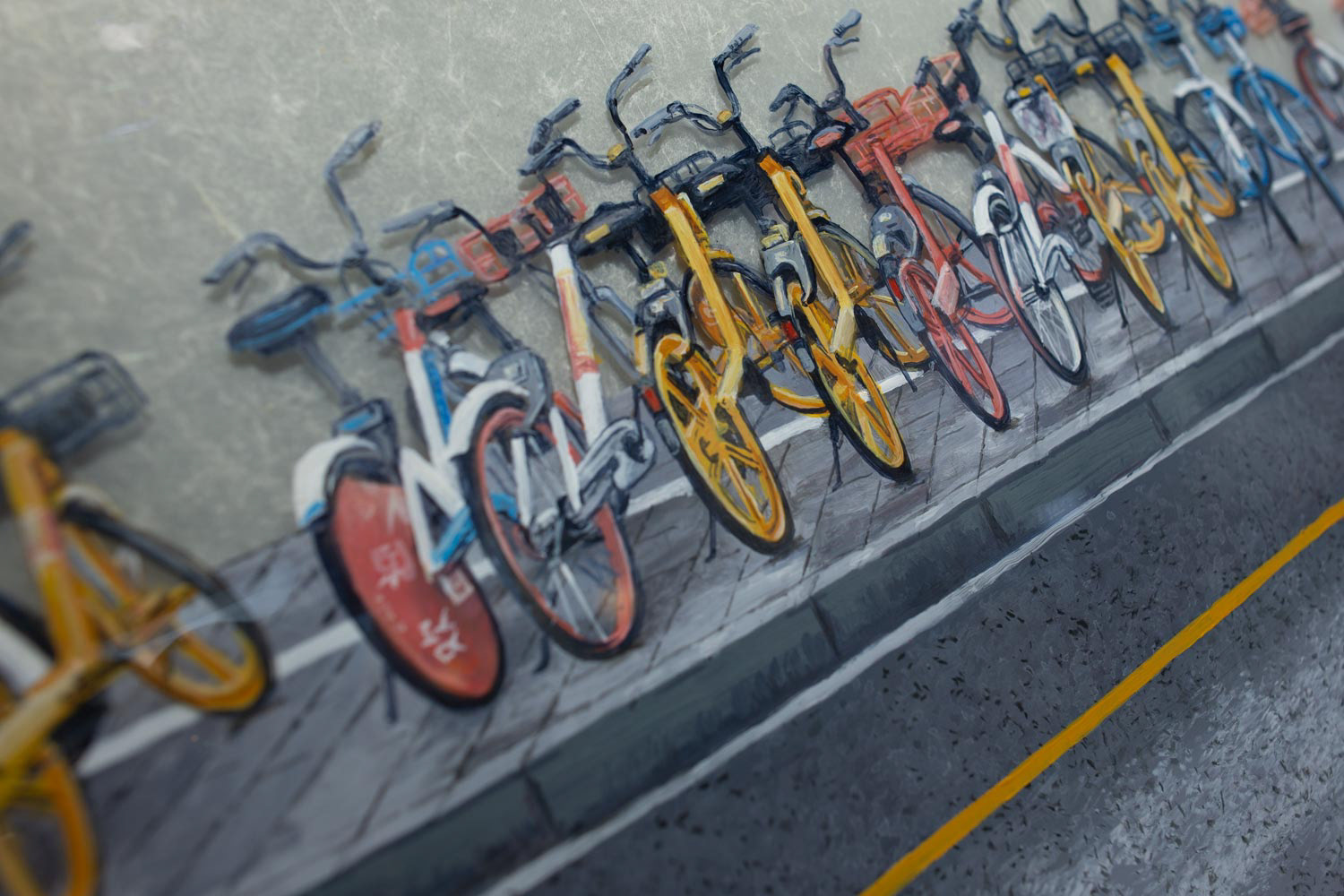
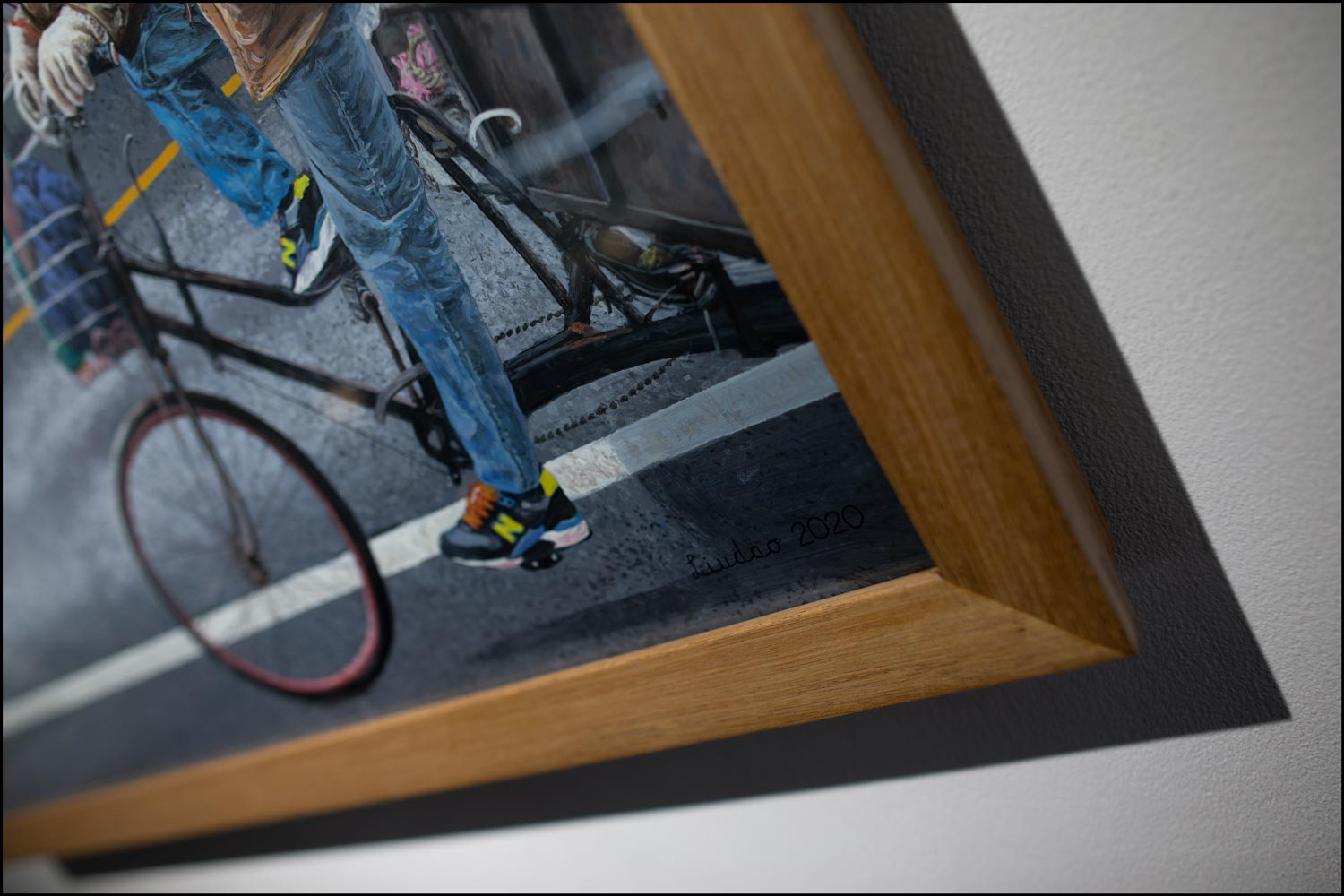
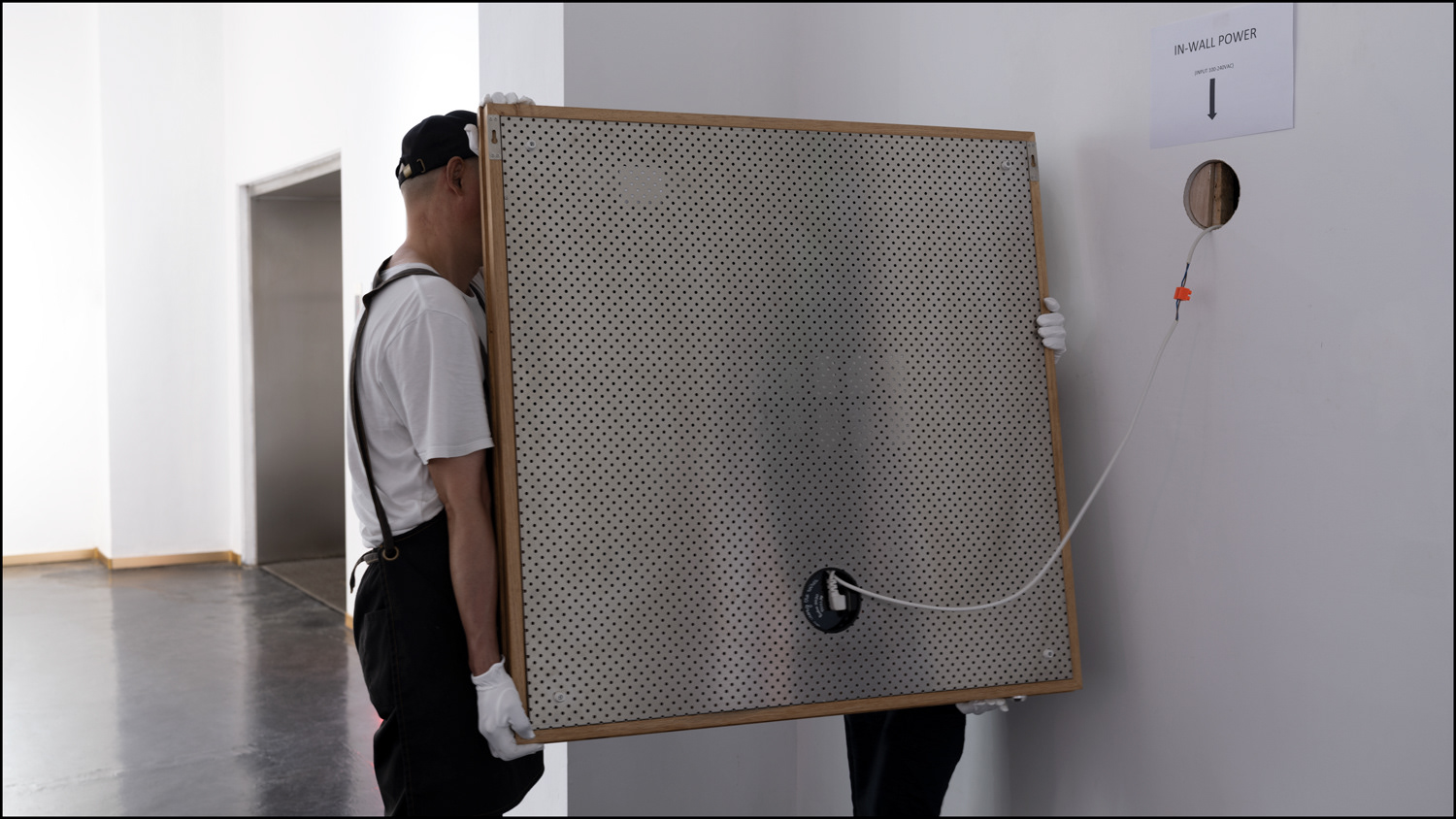
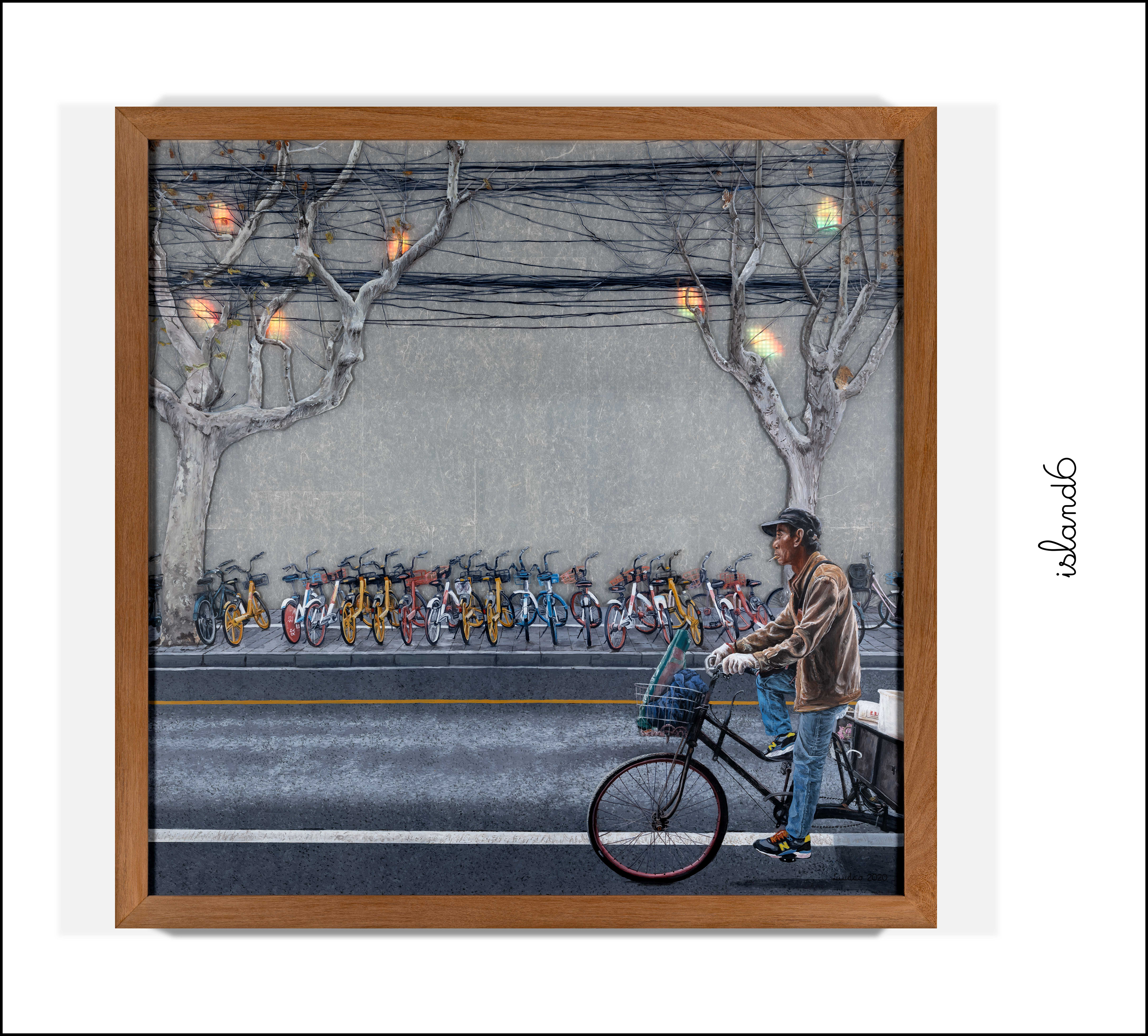
VIDEO

